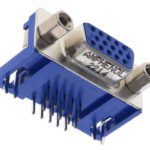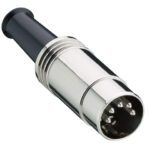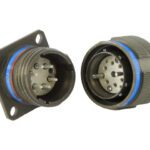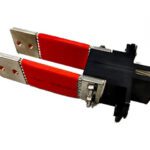What are Low-PIM Connectors?
Meet the Connector: Low-PIM Connectors
Low-PIM connectors are specialized RF connectors designed to reduce passive intermodulation distortion (PEM) or interference, which can occur when multiple signals interact within a connector. These unwanted frequencies can cause degradation in signal quality and impair performance. Maintaining high signal integrity is critical, as signal distortion caused by intermodulation can reduce data rates and bandwidth, increase noise levels, and decrease coverage range in RF systems such as wireless networks, cellular base stations, radar systems, and satellite communication systems.
Low-PIM connectors are designed to minimize signal reflection, unwanted resonance effects, and nonlinear behavior that can lead to intermodulation distortion. They may feature other attributes, such as sealing or other ruggedization features, as they are often used in outdoor or harsh environment applications.
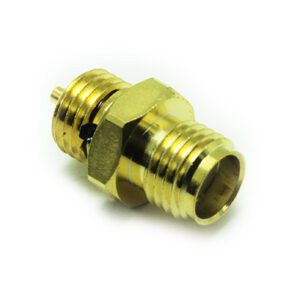
COAX Connectors Ltd. offers a sealed version of its high-performance, 50 ohm, low-PIM SMA connector. This front-mounted jack has a gold-plated body and round contact and is rated to IP68.
A wide variety of connector types are designed to be low PIM or are available in a low-PIM version, most commonly:
- SMA (SubMiniature version A): SMA connectors offer good electrical performance and low-PIM characteristics, making them suitable for high-frequency applications.
- N-Type: N-Type connectors are commonly used in high-power and high-frequency applications and are available as low-PIM variants.
- TNC (Threaded Neill–Concelman): A variant of the N-Type connectors, TNCs feature a threaded interface for secure connections and are available in low-PIM options.
- 7/16 DIN: 7/16 DIN connectors feature high-power handling capability and low-PIM performance.
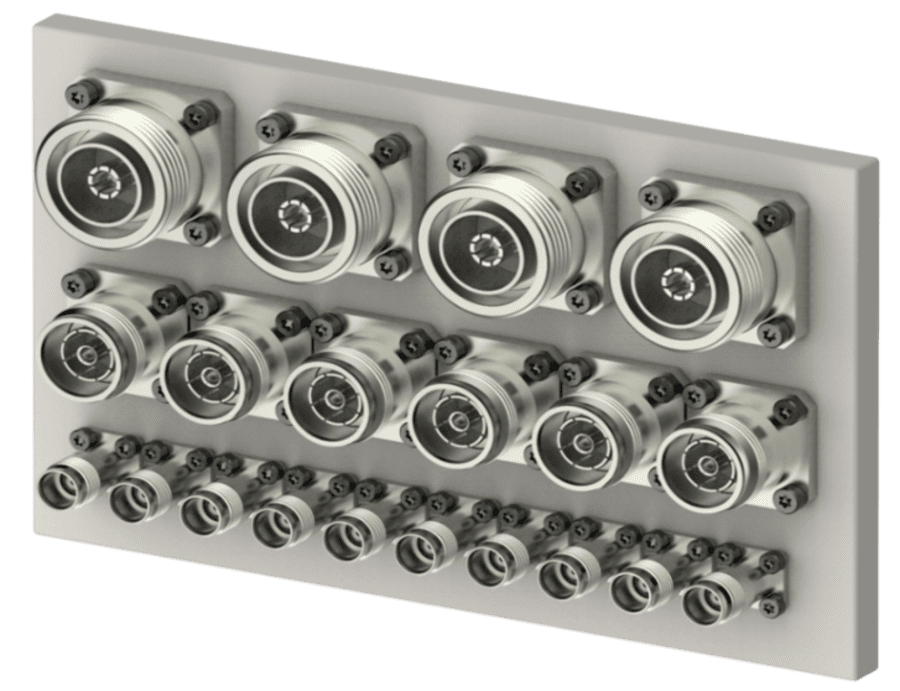
Rosenberger’s NEX10 standard interface provides low-PIM performance in a robust and compact format in a variety of mating types.
- Type-NEX: Type-NEX connectors are an enhanced version of the N-Type connectors and provide improved low-PIM performance.
- 4.3-10: The 4.3-10 connector is a compact, lightweight connector with excellent electrical performance and low-PIM characteristics.
- QMA (Quick-lock Miniature type A): QMA connectors are compact, snap-on connectors that offer good electrical performance and low-PIM characteristics.
- QN (Quick-lock N): QN connectors combine the performance of N-Type connectors with the convenience of quick-lock mechanisms. They offer low-PIM performance and are suitable for high-frequency applications.
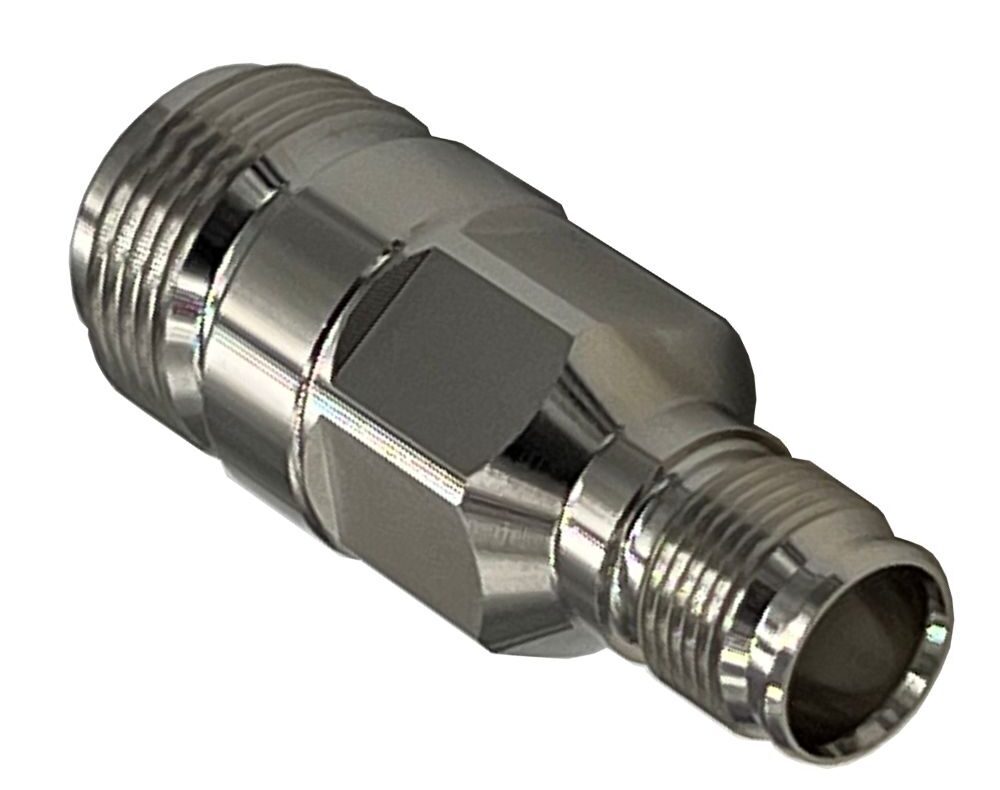
Amphenol RF’s NEX10 adapters are designed to solve passive intermodulation in a network to reduce interference that can degrade the network quality.
Design Notes for Low-PIM Connectors
Standards: Low-PIM connectors are standardized under International Electrotechnical Commission (IEC) standard, specifically IEC 61169-40. This standard specifies the requirements and test methods for low-PIM RF connectors.
Materials: Low-PIM connectors utilize materials with low electrical resistance and excellent thermal stability to minimize resistance changes and thermal expansion, such as brass, beryllium copper, stainless steel, ceramic, and glass.
Shielding: Low-PIM connectors suppress interference by using shielding to reduce external electromagnetic interference (EMI) and minimize the risk of intermodulation distortions.
Contact interface: The contact interface in low-PIM connectors is designed to minimize air gaps or uneven contact points, which can lead to signal reflections and intermodulation.
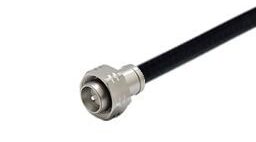
Radiall’s low-PIM line includes 4.3-10, 4.1-9.5, DIN 7/16, NEX10, PIM-MAX, and QLI connectors
Impedance: 50 Ohm (higher impedance values of 75, 100, or 200 ohms are found in certain specialized applications).
Markets, Sectors, and Applications
Datacom/Telecom, Industrial, Medical, Military and Aerospace, Transportation
Low-PIM connectors are used in a wide variety of applications that require RF connections, such as telecommunications, television and radio broadcast, military (radar, comms, satellites, defense), medical (imaging, wireless telemetry, patient monitoring), industrial control systems, energy sector applications, flight transportation (navigation, telemetry, communications)
Cables also play a role in low-PIM system design. Times Microwave’s TFlex-402 is a high-performance microwave cable that offers low loss, excellent shielding, and low-PIM characteristics, providing an alternative to semi-rigid cables while maintaining comparable electrical performance.
Suppliers
Amphenol Communications Solutions, Amphenol RF, COAX Connectors Ltd., Hirose Electric, ITT Cannon, Lemco Precision, Molex, Radiall, Smiths Interconnect, SV Microwave, Times Microwave Systems, Cinch Connectivity Solutions, IMS Connector Systems, JAE, Samtec Inc., SOS Engineering, TE Connectivity, Weidmüller, Würth Elektronik, and many others.
Related products:
Learn more about RF connectors.
Like this article? Check out our other Meet the Connector and RF and Coax articles, our Materials Market Page, and our 2023 and 2022 Article Archive.
Subscribe to our weekly e-newsletters, follow us on LinkedIn, Twitter, and Facebook, and check out our eBook archives for more applicable, expert-informed connectivity content.
- Where in the World is Amphenol LTW’s Luc Kan? - April 23, 2024
- TE Connectivity’s Sustainability Efforts Pay Off - April 23, 2024
- What is a VGA Connector? - April 23, 2024
